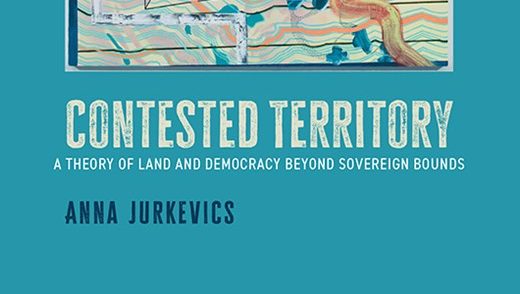We recently spoke with Assistant Professor Xiaojun Li about his forthcoming article in the Canadian Journal of Political Science, “Misperceptions of Chinese Investments in Canada and Their Correction: Evidence from a Survey Experiment”, and about his research plans at the University of Hawaii’s East-West Center, this winter.
What motivated you to look at Canadians’ misperceptions around foreign direct investment (FDI) from China?
Over the past few years, there have been many news reports on Chinese investments coming into Canada, often portraying them as a potential threat to the Canadian economy and the Canadian way of life. This has led to a generally negative opinion in Canada regarding Chinese FDI according to a study by the Asia Pacific Foundation of Canada. Notably, the study found that not only did Canadians drastically overestimate the extent of Chinese investment in the country, a sizeable proportion of them were also misinformed about Canada’s investment rules and practices. These findings caught my attention and they seem to suggest that such misperceptions contribute to the aversion of Chinese investments. If this is indeed the case, I wonder whether or not the Canadian public would shift their opinions toward Chinese investments if they found out about the actual amount of Chinese FDI and the investment rules that govern them. With these questions in mind, I implemented a survey experiment last year to explore the extent of these misperceptions and the effects of corrective information.
Tell us more about your findings – what surprised you about what you found?
The results from the survey confirm that Canadians have considerable misperceptions about both the relative size of Chinese FDI and regulations governing such investments in Canada. More specifically, respondents in our sample on average estimated that the percentage of FDI in Canada coming from China is 30%, which is similar to the estimates given by respondents in the APFC national poll and 10 times bigger than the Canadian official statistics (3%). Meanwhile, only 7% of the respondents gave the correct answers to all three questions regarding Canadian rules and regulations on FDI. Surprisingly, correcting either one of these two misperceptions fails to elicit meaningful changes in attitudes toward Chinese investments. It is only when both forms of misperceptions (innumeracy and misinformation) are corrected at the same time do we see substantial improvement in the evaluation of Chinese FDI. This suggests that failure to account for multiple sources of misperceptions may be one of the reasons why some earlier studies found zero or even negative effects of corrective information. Another surprising finding is that Canadians do not view Chinese investments from state-owned companies less favourably than those from private firms, despite frequent portrayals of such investments as threatening by the media.
Can you touch on the policy implications of corrective information and how this can impact Canada’s expansion of business ties with China
With a bilateral investment treaty signed in 2014 between Canada and China, it is expected that business ties between the two countries will likely expand in the future. To prevent potential backlashes against Chinese deals, Ottawa may want to find ways to dispel the misperceptions held by the public regarding Chinese investments. This can be as simple as conducting public information campaigns, but their impacts can nevertheless be powerful–I remember one respondent messaging me privately after completing the survey, saying that they were “shocked by the actual amount of 3%”, which “gave [them] pause” in their evaluation of Chinese FDI.
How do you anticipate this survey experiment / your findings will shape your future research?
I see several questions arising from this research that can be explored further. First, can these attitudinal changes induced by corrective information be sustained over time? Second, are there similar misperceptions in other domestic and foreign policy areas such as immigration and foreign aid? Finally, the current study uses government as the source of correct information, but will other sources (e.g. media) be more or less effective in correcting the misperceptions? I will examine these questions in my SSHRC project titled “Misinformation and Innumeracy in Canadian Public Opinion”.
Tell us more about your research agenda while you are a POSCO visiting fellow at University of Hawaii’s East-West Center in the winter of 2018
Years of isolation have left North Korea economically reliant on China. Today, diplomatic efforts to contain North Korea’s nuclear ambitions depend on China’s ability and willingness to control trade between the two nations. As an authoritarian state, the Chinese government is assumed to be able to control the pricing and quantities of imports and exports to North Korea. After three decades of market reform, however, less than 20% of China’s trade with North Korea is now in the hands of state-owned enterprises. The role of private firms raises the question of whether China’s willingness to exert leverage is affected by the political-economic interests of these firms. Do private firms behave the same way in their commercial interactions with North Korea as their state-owned counterparts? Will the rise of non-state firms limit China’s option in exercising economic statecraft?
These are the questions that I will explore while at the East-West Center in a project titled “Market Liberalization, Commercial Interests and China’s Economic Statecraft toward North Korea”.
What motivated you to pursue a research program that is focused on trade between China and North Korea?
Existing scholarship on China-North Korea trade all confront a daunting challenge: the dearth of fine-grained data. Consequently, scholars have had no choice but to make inference from aggregate trade flows, anecdotes, or unrepresentative surveys on Chinese enterprises engaging in trade with North Korea. One innovation of this study is the use of an official yet unpublicized dataset that contains the universe of China’s transaction-level export/import records. With this data, it is possible to answer questions such as: Who is trading what with North Korea at what price? How does trade fluctuate in response to shifts in the bilateral relationship? Is there any systematic difference between SOEs and non-SOEs in terms of their trading behaviour? These answers in turn will help us evaluate how China may be able to use its economic leverage to influence North Korea, as it has been increasingly called upon to do so by the international community.
Xiaojun Li (PhD Stanford) is Assistant Professor of Political Science and Faculty Associate at the Institute of Asian Research at UBC. His research investigates the impact of domestic politics on the process and content of foreign economic and security policies; the impact of global supply chains on trade and investment; and, the political economy of trade liberalization in developing and post-communist countries. He uses China as his primary case of inquiry, and he draws on a multitude of qualitative and quantitive methods including, interviews, archival research, historical institutional analysis, survey research, web-scraping, and large-N analysis. He is currently a POSCO visiting fellow at the University of Hawaii’s East-West Center, and has held visiting positions at Harvard and Fudan Development Institute.


